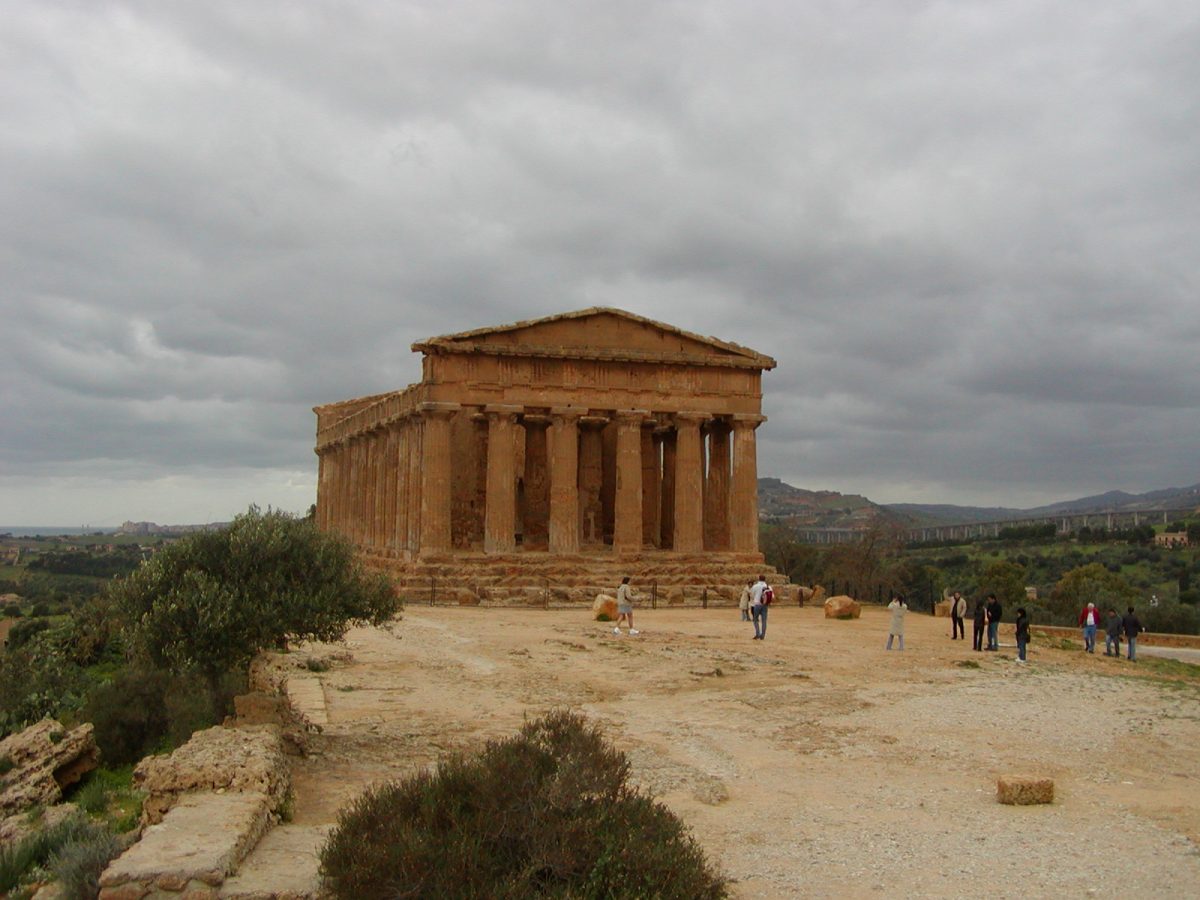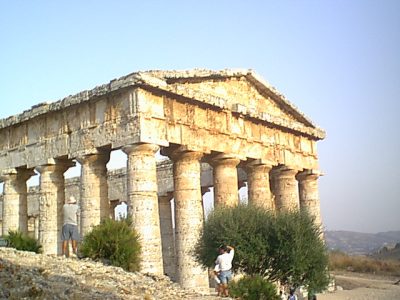Sicily is the largest island in the Mediterranean Sea. It is a region of Italy.
Sicily covers an area of ca. 25.000 km2 and is mostly mountainous with a few river plains, the largest in the hinterland of Catania. In ancient times Sicily was densely forrested, but most of the forrests have been cut down through the centuries.
Sicily is currently divided in nine provinces: Palermo, Trapani, Agrigento, Enna, Caltanissetta, Messina, Catania, Siracusa (Syracuse) and Ragusa, each named after the provincial capital.
The history of Sicily covers three millennia so this page can only be a short summary.
Prehistory
Sicily was settled in the stone ages, around 10.000 years BCE. At first people were gather-hunteres and lived in caves. Several caves decorated with grafitti have been found.
Later, circa 5.000 BCE, agriculture became the dominant livelihood, and villages and burial grounds have been found in various places.
Sights: Necropolis of Pantalica; Grotta dell’Uzzo; Grotta dell’Addauro.
Museums: Archeological Museum “A. Salinas”, Palermo; Archeological Museum “Paolo Orsi”, Syracuse.
The Greek and Phoenician Colonisation
Before the arrival of the Greeks, Sicily was settled by three ethnic groups, all of unknown origin. They were the Elymians, the Sicani and the Siculi. The Elymians lived mostly in the NW., where there main cities were Segesta, Erice and Entella. The Sicani had settled in the central and S. parts of the island, while the Siculi lived on the E. side. All three people opposed the Greek colonisation, but in the end they adopted the hellenistic culture anyway, as the Temple of Segesta and the Theatre of Segesta show.
Both the Greeks and the Phoenicians arrived in Sicily in the 8th century BCE, but their approach were different.
The Greek opted for a full-scale colonisation and various greek city states founded and populated in a period of 250 years a number of cities on the E. and S. coast of Sicily, including Zancle (Messina), Naxos, Syracuse, Catania, Megara, Gela, Imera, Selinunte and Akragas (Agrigento).
The Phoenicians preferred an approach based on cooperation and trade. They founded few, small and coastal cities that were more like trading stations for exchange with the indigenous people than colonisation. The most important cities founded by the Phoenicians are Motya (Mozia), Palermo and Solunto.
While the Greeks were often in conflict with the Sicani and the Siculi, the Phoenicians generally had peaceful relations with the indigenous, particularly with the Elymians.
Greek and Phoenician interests, the former expressed mostly by the rulers of Syracuse, the latter by Cartage, soon collided violently, and for centuries Sicily was regularly ravaged by war, between the the cities of Greek origin and Cartage or between the Greek cities themselves. Some cities perished in the wars, such as Motya in 397 BCE and Selinunte in 250 BCE.
The Greek-Phoenician standoff continued until the Roman intervention in the First Punic War.
The Greek colonisation of Sicily was very successful at the cultural level, and at the end practically the whole island was thoroughly hellenised. Sicily had been firmly anchored in the eastern Mediterranean, and Greek culture would survive for another thousand years, until the arrival of the Normans.
Sights: The Phoenician city of Mozia; The Elymian city of Segesta; The Greek ruins in Selinunte, Syracuse, Taormina and Naxos; The Valley of the Temples, Agrigento;
Museums: Archeological Museum “A. Salinas”, Palermo; Fondazione Mormino, Palermo; Archeological Museum “Paolo Orsi”, Syracuse.
The Roman Domination
During the first Punic War (264-241 BCE) the Romans conquered almost all of Sicily and it became the first Roman province. Syracuse was the last part to be taken in 212 BCE after the death of Hiero II. Archimedes died in the battle for the city, though the Roman commander had ordered him spared.
Roman Sicily was a fairly quiet place and it was spared from war until the fall of the Roman Empire. The experience of Roman procincial rule was not always pleasant, though, as the history of governor Verres testifies. The seat of the governor was in Syracuse that remained the single most important city on the island.
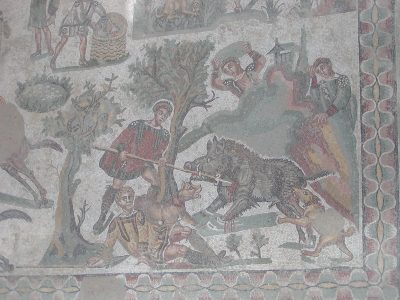
The cultivable land was gradually ammassed by the Roman nobility, and the economic base became the latifundia, large estates producing mostly grain for export, based on slave labour. Sicily played a central role as a supplier of grain for the city of Rome, but the ruthless exploitation of the agricultural slaves led to several rebellions, the most important in 139-132 BCE and 104-100 BCE. They were drowned in blood. Slavery was essential to the Roman economy and the institution could not be questioned.
Little changed in Sicily when the republic fell and the Roman Empire was born. Sicily remained a quiet and safe place, it was close to Rome, and many senators owned land there and would visit regularly. Sicily was one of the few provinces where a Roman senator was allowed go without a permission from the emperor.
Roman domination did not influence the common culture of the people much, as the Romans normally didn’t try to romanise people of Greek culture. Most people spoke Greek rather than Latin, Greek traditions and customs were maintained, and Greek culture was generally predominant. Funerary inscriptions at the end of the Roman period, after seven centuries of Roman rule, are still ninety percent in Greek.
Christianity spread very soon in Sicily and was common already in the 4th century CE.
Sights: Villa Romana del Casale, Piazza Armerina; Villa Bonanno, Palermo; Roman buildings in Syracuse; Roman insula in Marsala.
Museums: Archeological Museum “A. Salinas”, Palermo; Fondazione Mormino, Palermo; Archeological Museum “Paolo Orsi”, Syracuse.
Byzantine Rule
With the fall of the Roman Empire of the West, the situation of Sicily had to change. The Vandals attacked Sicily from North Africa, first in 440 CE, and in 468-476 they took the whole island. They were soon replaced by the Ostrogoths who kept control of Sicily until 535, when the Byzantine general Belisarius conquered Sicily for the Byzantine Empire.
Formally, Sicily was only made a part of the Byzantine Empire in 692, but it remained firmly attached to the eastern Mediterranean, in cultural, economical and political terms. Sicily remained Greek.
The last strings to Rome were cut when the papal estates in Sicily were confiscated in 726 and the Sicilian church placed under the patriach of Constantinoble in 751.
During iconoclasm in Constantinoble the Byzantine hold on Sicily loosened. In some occasions governors rose against their emperor, and with the Arabs in control of North Africa the situation became critical.
While there had been numerous cases of attacks by muslim pirates on Sicilian cities, the Arabs had made no attempts at conquering the island. In 827 the Byzantine general Euphemius rebelled, he defeated the govenor, took Syracuse and declared himself emperor.
Shortly after one of Euphemius’ deputies took up arms against him and Euphemius was forced to ask for help in Africa. The Arabs were happy to help him out and landed in Mazara with 10.000 men. In the years to come the Arab forces conquered Sicily bit by bit. Palermo fell in 831, Cefalù in 858, Enna in 859, Syracuse fell in 878 and only some minor cites held out longer. Taormina fell as the last in 902.
With the fall of Syracuse, 1500 years of Greek cultural dominance in Sicily ended. It had survived the Romans, the Byzantines and the conversion to Christianity, but now the capital was plundered and the inhabitants killed or enslaved. The cultural changes were profound. Christianity ceded to Islam, Greek language to Arabic, and Palermo became the capital instead of Syracuse. Antiquity had ended.
Sights: Cathedral of Syracuse.
Museums:
The Arabs and Islam
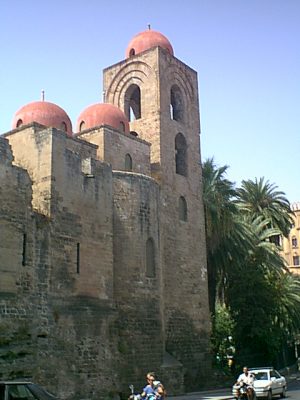
The Arabs were good rulers and Sicily prospered. The cities grew, commerce flourished and the arts blossomed. Both jews and christians were tolerated by the new rulers, and they were allowed to remain, to practise their religion and work as before. The only discriminatory element were higher taxes for non-muslims.
The Emir of Sicily ruled from Palermo, that now became the leading city. Travellers wrote that it could rival the large cities of the east in splendor, wealth and culture. Palermo had over 300 mosques according to an Arab traveller. Many other cities flourished and new cities were founded.
Agriculture changed dramatically with the Arabs. They introduced new crops, such as the orange, the lemon, the egg-plant and others, they brought new techniques in irrigation, and they made an end to the latifundium. The huge slave-based estates were split into smaller farms, worked by free labourers.
The Norman Kingdom
During the crusades groups of Norman knights from Brittany in France “discovered” Southern Italy. In the decades after 1035 Roger and Robert d’Hauteville established themselves in Calabria and Apulia, and even took Rome and held the pope captive for a period to get his recognition for their rule. They got it in counterpart for throwing the muslims out of Sicily and supporting the Pope against the emperor of the Holy Roman Empire.
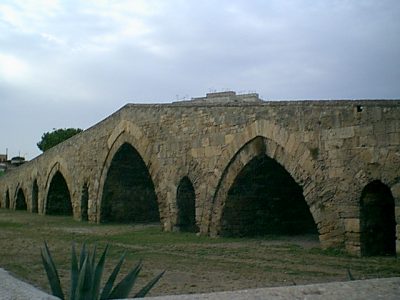
The Arab emirate in Sicily was divided, so the Normans invaded in 1061 and in 1091 they had control of the whole island. Sicily now found itself within the western sphere of influence for the first time ever. The mosques where closed, demolished or changed into catholic churches and the Pope became head of the Sicilian church for the first time ever.
The muslims weren’t purged by the new Norman rulers. They were allowed to remain, to work and to hold public office, which meant that the Arab way of administration was maintained.
The organisation of the land, however, did change. The Normans introduced West European style feudalism, which in effect was a reintroduction of the latifundium.
Many Arab architects continued to work for the Normal rulers, which led to a strange architectural style called the Arab-Norman style. Many buildings from this period can still be seen in Palermo, several with eyecatching red domes.
Sights: The Norman Palace and Palatine Chapel, Palermo; Cathedral of Palermo; Zisa, Palermo; San Giovanni degli Eremiti, Palermo; La Martorana, Palermo; Cathedral of Monreale; Cathedral of Cefalù.
German, French and Aragon Domination
The Norman dynasty in Sicily lasted a century, but in 1194 there was no male heir, and Sicily passed to emperor Henry VI of the Holy Roman Empire, who was married to a daughter of Roger II of Sicily. Henry VI died soon after and passed the reign on to his young son, Frederick II, also known ad Stupor Mundi. He made Sicily his preferred residence for half a century, he died there and is buried there, in the Cathedral of Palermo.
Frederick II did what his Norman predecessors had chosen not to do: he purged the remaining muslims. This meant that a large number of highly skilled artisans, administrators and merchants left Sicily, and this self-inflicted “brain drain” had negative repercussions on the further development of the island in the coming period.
With the expulsion of the muslims the last thread of the former ties to the east was cut, and Sicily has since been firmly oriented towards the west.
With the Hohenstaufer dynasty in power, Sicily was dragged into a much wider conflict. The Holy Roman Empire under the Hohenstaufer was in continuing conflict with the Pope. The Norman rulers had been allied with the Pope against the emperor, but suddenly Sicily was switched from a pro-papal stance to one of opposition and the Pope was surrounded by the empire on all sides. This was not a tenable position, so the Pope tried to drag the French into Sicilian affairs.
Charles I of Anjou intervened in Sicily and Southern Italy in 1266 at the Pope’s request, and he first defeated and killed Manfred, an illegitimate son of Frederick II, and two years later Conradin, the grand-son of Frederick II. Following this military success an Angevin kingdom was established in Naples and Sicily, but Sicily soon went it’s own way.
Charles I had great plans of taking over the Byzantine throne, and to finance his plans he levied heavy taxed on his subjects. An episode (which may be legend) in Palermo in 1282, where a French soldier harassed a local woman on her way to evening mass, the vesper, spurred a popular rebellion, called the Sicilian Vespers, against the Angevin rule. Within a day the French garrison in Palermo was overrun, and in a short time the rebellion had spread to all of Sicily, routing the French garrisons.
The local leaders of the uprising soon understood that they had no chance against a certain Angevin counterstrike, so they offered the Sicilian crown to Peter III of Aragon and six months after the start of the rebellion Peter III of Aragon is proclaimed King of Sicily.
Both Peter III of Aragon and Charles I of Anjou died within a few years, passing the claim on Sicily on to different heirs. Sicily became a separate kingdom ruled by a branch of the House of Aragon, but the conflict with the Angevins in Naples continued for decades to come, with repeated and reciprocal invasions in Sicily and Southern Italy.
In 1409 the lines of succession within the House of Aragon merged and Sicily was reunited with Aragon in Spain.
Sights: Cathedral of Palermo; Palazzo Chiaramonte, Palermo;
The Spanish Centuries
Sicily remained under direct Spanish domination for another three centuries, until 1713.
Sicily’s attachment to Spain would grow stronger and its importance would declined further. In 1442 Alfonso V of Aragon and Sicily conquered the Kingdom of Naples, which he united with Sicily as the Kingdom of Two Sicilies.
When Ferdinand II of Aragon and Isabella of Castille married in 1469 and Spain was united, Sicily and Naples remained part of ever-growing Spanish empire. With the Spanish expansion in the newly discovered Americas Sicily’s weight within the Spanish empire diminished further.
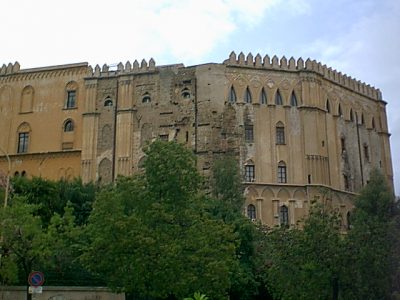
Sicily was ruled by a viceroy with residence in the Norman Palace of Palermo. The viceroy would sometimes be a Spanish nobleman, sometimes one of the Sicilian princes and on occations even clerics could become viceroys.
The Spanish administration was principally interested in levying sufficient taxes for use in Spain and overseas, and the Sicilian upper class, the princes and barons who owned most of the land, struggled to maintain as much independence and fiscal immunity as possible. The main task of viceroy was to reconcile these opposing interests.
The Spanish hold on Sicily had trembled in the last decades of the 17th century when several Sicilian cities had rebelled, and when the death of Charles II of Spain in 1700 lead to the start of the War of Spanish Succession the future of Sicily became completely open. The only certainty was that nobody would ask the sicilians what they thought.
Foreign Rule
The War of Spanish Succession ended with the Peace of Utrecht in 1713. One of the provisions of this treaty was to give sovreignty of Sicily to the House of Savoy, that originated from the region of the same name in France, but whose main possession was Piedmont in Northern Italy.
The king of Spain didn’t appreciate the loss of Sicily and Sardinia and occupied both in 1717, but was force to leave by British and Austrian forces the year after, and Sicily was restored to Savoy.
The king of Savoy wasn’t pleased with Sicily, so he swapped it for Sardinia in 1720, and Sicily became a possession of Holy Roman Emperor Charles VI and was subsequently under Austrian rule for a short period.
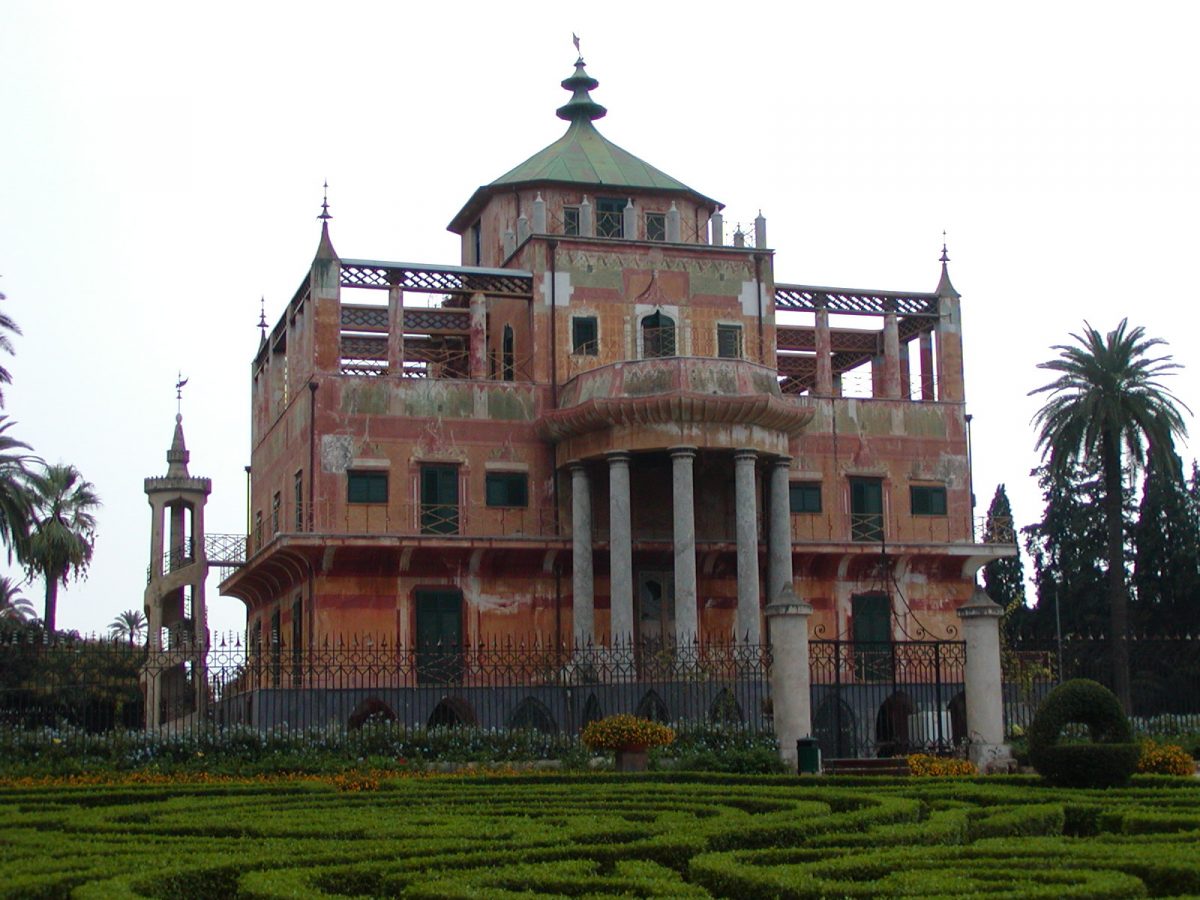
After the War of Polish Succession and the Peace of Vienna in 1735, Sicily changed hands again. This time it was given, together with Naples as the Kingdom of the Two Sicilies, to Charles of Bourbon, who later became Charles III of Spain. The condition was that Naples and Sicily should not be reunited with Spain, so Charles of Bourbon left the Two Sicilies to his youngest son when he became king of Spain.
The capital of the Two Sicilies was Naples, and this together with the centralising policies of the Bourbons caused widespread dissatisfaction in the Sicilian elite that felt its power had diminished compared to the time of Spanish domination.
In 1799 Napoleon invaded Italy and took the mainland, and the king had to escape to Sicily where he took up residence in Palermo, but he returned to Naples the same year. Napoleon entered Italy again in 1806, and this time he established a puppet kingdom in Naples. The Bourbon king had to flee to Sicily again, this time under the protection of the British Navy commanded by Lord Nelson.
In 1815 the Two Sicilies were restored to the Bourbons, and everything continued just as before the Napoleonic wars. The dissatisfaction of the Sicilians nobles led to revolts in 1820 and 1848, but they were suppressed.
Sights: Palazzo Cinese, Palermo.
The Italian Kingdom
The discontent of the Sicilians found an outlet when Giuseppe Garibaldi and a thousand volunteers invaded Sicily in 1860. The project of Garibaldi was a united republican Italy, but for the Sicilians it was probably more important that he offered a possibility to get rid of the Bourbon regime. Garibaldi had widespread support in Sicily and within weeks he controlled the island and could continue his campaign on the mainland.
Garibaldi’s project succeeded only partially. Italy was united, but as a kingdom under the king of Piedmont and Sardinia, who now became king of Italy.
Sicily maintained a role as a semi-autonomous part of the kingdom, almost as under the Spanish. The Sicilian elite bargained for a de facto autonomy in internal affairs in return for acceptance of Italian sovreignty and formal submission to the king.
The result was very weak Italian control of the Sicilian territory, resulting in widespread lawlessness, especially in the countryside. Brigandage abounded, travelling unarmed impossible, and bands of outlaws were often employed by the landowners to protect their property. The mafia is believed to have its origin among these groups of payed criminals.
The populace of Sicily, who had supported Garibaldi on promises of land reforms, was deluded. For the common peasant and day-labourer little if anything changed for the better. In the 1890s the land-labourers organised in the so-called fasci, which occupied unused land and tried to obtain the promised reforms of land ownership. Combined membership of all the fasci was as high as a million. When the armed bands of the landowners couldn’t stop the fasci, the armed forces of the Italian state was called in and the mostly peaceful movement was violently crushed. Deprived of hope for a better future, huge numbers of land-workers emigrated to the Americas in the following decades.
Fascism (not to be confused with fasci) didn’t have widespread support in Sicily, but neither did it meet much resistance. In the early 1920s the fascists launched a high profile campaign against the mafia, but it was stopped from above when it closed in on mafia supporters among the Sicilian landowners, who were also supporters of the fascists regime.
World War II came to Sicily in April 1943 when the Allied forces invaded the island from N. Africa. Several Sicilian port cities sustained severe damage from the allied aerial bombardments before and during the invasion.
Sights: Teatro Massimo, Palermo; Teatro Garibaldi, Palermo;
Museums: Museo Etnografico Siciliano Pitrè, Palermo;
The Italian Republic
Immediately after the liberation of Sicily a movement for Sicilian independence appeared. It was widely supported by the landowners, the mafia and the USA, though not for the same reasons. The landowners and the mafia wanted to create a platform for a future compromise with the new, unknown government, and the USA a possibility to detach Sicily from Italy if the communists should gain control of the Italian state after liberation.
The gamble paid off, and in 1946 Sicily became the Autonomous Region of Sicily, partly funded by the Italian state, but with self rule in practically all internal affairs. When the republican constitution was adopted in 1948, the autonomy of Sicily was written into it.
After 1946 the movement for Sicilian independence withered away as quickly as it had appeared, as most leading figures retracted their support. A part of the military branch of the movement remained, under the leadership of Salvatore Giuliano, a man with close ties to the mafia but hailed abroard as a modern Robin Hood. Giuliano was betrayed and killed under mysterious circumstances in 1950, which finally put and end to the independence movement.
Just as the landowners and the mafia got organised after the war, so did the peasants. In a movement that was almost a repeat of the fasci movement sixty years earlier, the land workers formed cooperatives, occupied unused land and demanded a land-reform. They were violently opposed by the landowners and the mafia in unison and hundreds of their leaders were assassinated.
A land-reform was introduced in 1950, but it was too little and too late, and the result was much as after the supression of the fasci. Many chose to leave the countryside, some for the cities that grew enormously in size, and some left Sicily for N. Italy or abroard.
Literature
Moses I. Finley: Ancient Sicily, Viking Press, London, 1979.
Denis MacK Smith: History of Sicily : Medieval Sicily 800-1713 and Modern Sicily After 1713, 1975
Joseph F. Privitera: Sicily: An Illustrated History, Hippocrene Books, 2002.
Christopher John Smith (ed.): Sicily from Aeneas to Augustus, Edinburgh University Press, 2001.
Robert Leighton: Sicily Before History: An Archaeological Survey from the Palaeolithic to the Iron Age, Cornell University Press, 1999.
B. S. J. Isserlin, J. Du Plat Taylor: Motya: A Phoenician and Carthaginian City in Sicily, Brill Academic Publishers, 1997.
Giovanni Pugliese Carratelli, G. Pugliese Carratelli (eds.): The Greek World: Art and Civilization in Magna Graecia and Sicily, Rizzoli, 1996.
Aziz Ahmad: History of Islamic Sicily, Columbia University Press, 2000.
Donald Matthew: The Norman Kingdom of Sicily, Cambridge University Press, 1992.
John Julius Norwich: The Normans in Sicily: The Normans in the South 1016-1130 and the Kingdom in the Sun 1130-1194, Penguin, 1992.
Henry Barbera: Medieval Sicily: The First Absolute State, Legas, 1994.
Pages related to "Sicily"
- Archeological Museum "A. Salinas"
- Archeological Museum "Paolo Orsi"
- Cathedral of Monreale
- Cathedral of Palermo
- Cathedral of Syracuse
- La Martorana
- Norman Palace
- Palatine Chapel
- San Giovanni degli Eremiti
- Sicilian Etnographic Museum "G. Pitrè"
- Temple of Segesta
- Villa Bonanno
- Villa Romana del Casale
- Zisa

